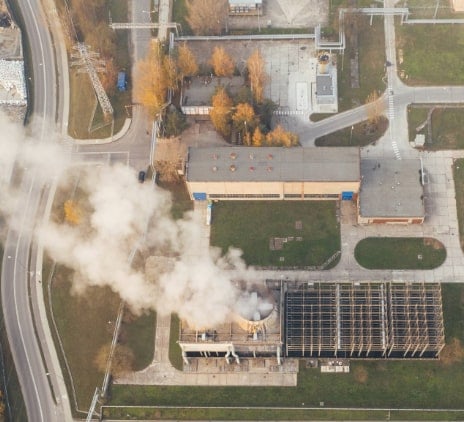-
Accounting Advisory
Our accounting advisory team help businesses meet their complex financial reporting requirements. The team can support in applying new financial reporting standards, IFRS/ US GAAP conversions, financial statement preparation, consolidation and more.
-
Payroll
Our team can handle your payroll processing needs to help you reduce cost and saves time so that you can focus on your core competencies
-
Managed accounting and bookkeeping
Outsourcing the financial reporting function is a growing trend among middle market and startup companies, as it provides a cost-effective way to improve the finance and accounting function. Our team can help with financial statement preparation, consolidation and technical on-call advisory.
-
Accounting Advisory
Our team helps companies keep up with changes to international and domestic financial reporting standards so that they have the right accounting policies and operating models to prevent unexpected surprises.
-
Crypto Accounting Advisory Service
Our team can help you explore appropriate accounting treatment for accounting for holdings in cryptocurrencies, issuance of cryptocurrencies and other crypto/blockchain related accounting issues.
-
ESG Reporting and Accounting
As part of our ESG and Sustainability Services, our team will work with you on various aspects of ESG accounting and ESG reporting so that your business can be pursue a sustainable future.
-
Expected Credit Loss
Our team of ECL modelling specialists combine help clients implement provisioning methodology and processes which are right for them.
-
Finance Transformation
Our Finance Transformation services are designed to challenge the status quo and enable your finance team to play a more strategic role in the organisation.
-
Managed Accounting and Bookkeeping Services
Outsourcing the financial reporting function is a growing trend among middle market and startup companies, as it provides a cost-effective way to improve the finance and accounting function. Our team can help with financial statement preparation, consolidation and technical on-call advisory.
-
Business Tax Advisory
Our business tax team can help you navigate the international tax landscape, grow through mergers and acquisitions, or plan an exit strategy.
-
Corporate Finance
Our corporate finance team helps companies with capital raising, mergers and acquisitions, private equity, strategic joint ventures, special situations and more.
-
Financial Due Diligence
From exploring the strategic options available to businesses and shareholders through to advising and project managing the chosen solution, our team provide a truly integrated offering
-
Valuations
Our valuation specialists blend technical expertise with a pragmatic outlook to deliver support in financial reporting, transactions, restructuring, and disputes.

-
Sustainability with the ARC framework
Backed by the CTC Grant, businesses can tap on the ARC Framework to gain access to sustainability internally, transform business processes, redefine job roles for workers, and enhance productivity. Companies can leverage this grant to drive workforce and enterprise transformation.

-
Business Tax Advisory
Our business tax team can help you navigate the international tax landscape, grow through mergers and acquisitions, or plan an exit strategy.
-
Corporate Tax Compliance
Our corporate tax teams prepare corporate tax files and ruling requests, support you with deferrals, accounting procedures and realise tax benefits.
-
Tax Governance
Our Tax Governance Services are designed to assist organisations in establishing effective tax governance practices, enabling them to navigate the intricate tax environment with confidence.
-
Goods and Services Tax
Our GST team supports organisations throughout the entire business life-cycle. We can help with GST registration, compliance, risk management, scheme renewals, transaction advisory and more.
-
Transfer Pricing
Our Transfer Pricing team advises clients on their transfer pricing matters on and end-to-end basis right from the designing of policies, to assistance with annual compliance and assistance with defense against the claims of competing tax authorities.
-
Employer Solutions
Our Employer Solutions team helps businesses remain compliant in Singapore as well as globally as a result of their employees' movements. From running local payroll, to implementing a global equity reward scheme or even advising on the structure of employees’ cross-border travel.
-
Private Client Services
Our private client services team provides a comprehensive cross section of advisory services to high net worth individuals and corporate executives, allowing such individuals to concentrate on their business interests.
-
Welfare and benefits
We believe that a thriving team is one where each individual feels valued, fulfilled, and empowered to achieve their best. Our welfare and benefits aim to care for your wellbeing both professionally and personally.
-
Career development
We want to help our people learn and grow in the right direction. We seek to provide each individual with the right opportunities and support to enable them to achieve their best.
Global survey finds business optimism has reached an all-time high
- Business optimism across Asia Pacific down to net 52% in Q1 2018
- Singapore optimism up 12pp in Q1
- But ASEAN business optimism up 3pp
- Global optimism reaches net 61% in Q1 – highest in 15 years of research
Business optimism across Asia Pacific is down from its recent peak in the first part of 2018, according to global research from Grant Thornton’s International Business Report (IBR). However, the findings also reveal a split in outlook. Optimism is down in the established economies of China and Japan, while it is up in the emerging ASEAN region. At a global level, business optimism stands at an all-time high during the first quarter of this year.
The IBR finds a dip in business optimism across Asia Pacific in Q1 2018, down 6pp to net 52%. This bucks the wider global trend, with Asia Pacific and Latin America the only major regions to see optimism drop over this period. However, a notable split emerges in the way the emerging and developed APAC economies have started the year.
In China, business optimism is down from an all-time high of net 78% in Q4 to 65% in Q1. In Japan, businesses reached positive territory for optimism in Q4 (net 3%) but it has slipped back to net -8%. However, across the ASEAN group of countries, economic optimism is up to net 61% in Q1. This is the joint highest quarterly figure ever recorded. Substantial increases in optimism come in Malaysia (up 22pp in Q1), Singapore (up 12pp) and Thailand (up 6pp).
Globally, business optimism is at net 61% in Q1 - the highest figure recorded in 15 years of research.
Rodger Flynn, CEO at Grant Thornton, commented:
“The drop in optimism across Asia Pacific contrasts with most other global regions. It is striking that the major contributors to this dip are China and Japan. That said, their confidence levels still compare favourably with those in recent years.
“In Japan, a strengthening yen will have dampened the mood somewhat. In China, the continued rebalancing of its economy, along with tough trade rhetoric with the US, are likely contributing factors. ASEAN businesses, on the other hand, are buoyant. The continued transfer of low-cost manufacturing sectors from China to neighbouring countries is driving business confidence.
“A talking point for the whole region, though, is the rhetoric around import taxes with the US ratcheting up. It will be telling to see how businesses respond over the next quarter. Most take the view that the risk of a fully blown ‘trade war’ has eased, but uncertainty is never welcome. Most business leaders will want to see clarity sooner rather than later.”
The IBR reveals that the proportion of Chinese businesses who expect exports to increase over the next year his down to net 25% in Q1, from net 33% in Q4. In Japan the figure is down to net 9% from net 12%. As a result, the Asia Pacific region slips 2pp to net 20%.
At the same time, there is a fall in expectations for increased profitability (down 7pp to net 40%) across Asia Pacific in Q1. Meanwhile, businesses report increased concerns that economic uncertainty will act as a constraint on growth (up 4pp to 42%).

